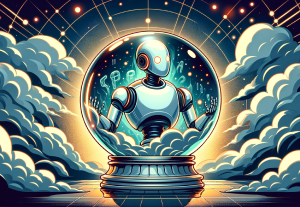Just a few years ago, building even a simple website required many lines of code and a good amount of technical knowledge. Today, technology may have truly outrun us. Thanks to the recent rise of platforms like Squarespace, a small business owner can have a website up and running in hours—without coding knowledge or experience.
These web design platforms are low hanging fruit for early-stage entrepreneurs and freelancers, giving those with limited web design and development skills the ability to launch a beautiful website in minutes. All users have to do is choose a template, upload the necessary copy and photographs, and hit “publish.”
For many, these types of platforms will save both time and money. However, web designers and developers might be asking themselves if technology has overstepped its boundaries. Are web development jobs at risk because of platforms like Squarespace? Despite what the evidence may suggest, the answer is no.
The Self-Service Trend
Squarespace is part of a larger automation trend that has spread far and wide, across multiple industries and beyond personal websites. In the e-commerce space, the popular automated platform Shopify allows users to create a functional online shop with the click of a few buttons and then upload a few inventory items. In the events space, Splash and Attending are playing a similar role. These platforms allow users to quickly and easily set up a landing page for an event with the bells and whistles of ticketing and social media registration.
These platforms are turning what was once a long, technical process into a seamless and code-free one. This is only the beginning. With the self-service trend gaining traction among industries everywhere, many think it could spell trouble for web designers and developers. Still, I wouldn’t discount the value of an IT degree just yet, becasue these automated platforms have their limitations.
The Limitations of Self-Service Platforms
Although these platforms may be the bread and butter of freelancers or small businesses owners who “just need a website,” these websites are still mere frameworks built for the masses and lack the sophisticated and complex functionalities that a reputable business website requires. Out-of-box solutions cannot accommodate a business that needs a complicated drop-down menu, specific navigation options, gift card and discount code redemption, or a sophisticated search results filter.
These are all features that need to be customized to a brand’s unique needs and business model. They require coding from scratch. Shopify would be crippled by the weighty needs of a company like Warby Parker, with its sophisticated filtering and “virtual try-on” option that allows customers to superimpose and fit specific glasses to their individual faces online. Forget the large-scale e-commerce needs of retail behemoths like Amazon, with their huge volume of products, custom imagery, and grouping. These types of requirements are so far beyond the capabilities of generic template sites that it would be the equivalent of trying to stuff an elephant into the trunk of a MINI Cooper.
Shopify would be crippled by the weighty needs of a company like Warby Parker
With these types of limitations to self-service platforms, I think it’s safe to say that web development jobs aren’t going anywhere any time soon. Nevertheless, to stay relevant for years to come, coders should be leveraging these platforms to do more in less time.
What Coders Should Do to Adapt
As the automation trend evolves, it will only affect those designers who have no value-add beyond incorporating a few design tweaks in template websites. Designers and coders need to be able to work together to develop attractive, functional templates that can be used across multiple projects by multiple people. Designers and coders who have trouble doing anything but adding a couple of cosmetic features will find themselves struggling to keep up.
Platforms like Squarespace may have their limitations, but template solutions aren’t going away. By adapting accordingly and embracing these solutions for what they’re worth, web developers should sleep easier knowing that there’s still value in writing code.
Image of Mondrian knockoff courtesy Shuttershock







